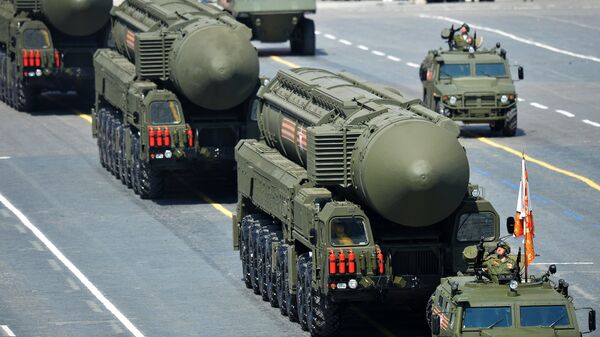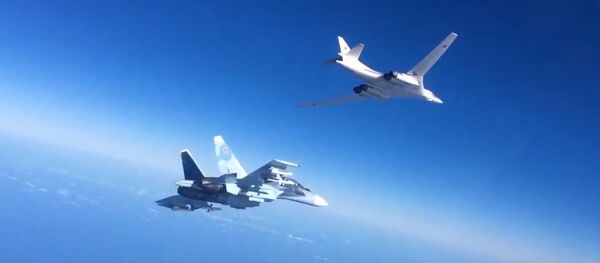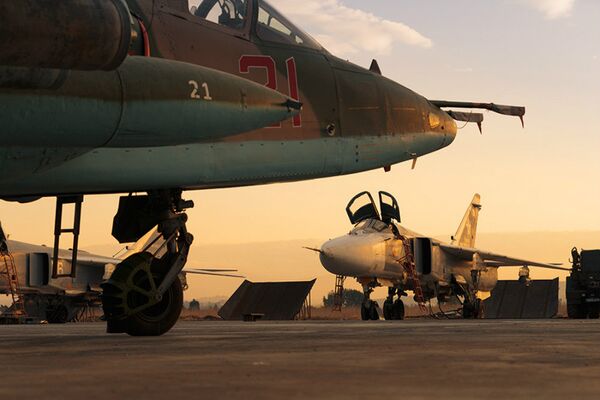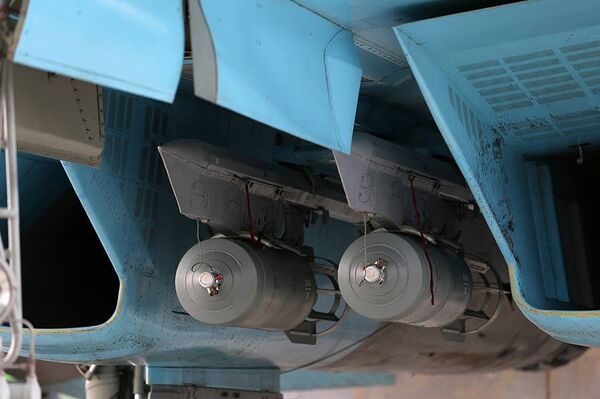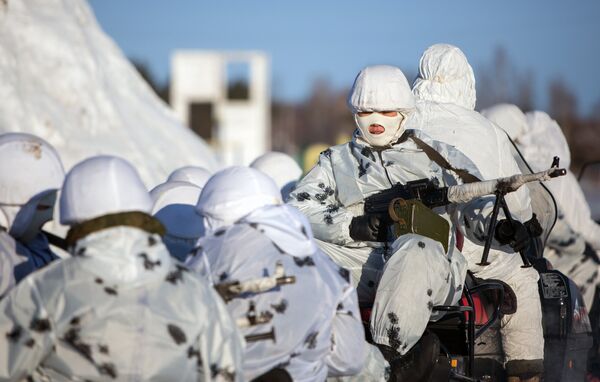Sputnik made up a list of the five most significant Russian military events of 2015.
Showcase of Advanced Weapons and Military Hardware During Moscow Victory Parade
The parade involved 16,000 troops, 143 military aircraft and helicopters and 194 pieces of military hardware.
Among them were Yars missile systems, Iskander-M tactical missile systems, Msta-S self-propelled guns as well as advanced air-defenses, including the Tor-M2U, Pantsir-S1, and the S-400 Triumf.
In addition, a number of armored vehicles were displayed, including T-90 tanks, and BTR-82A, Rakushka and BMD-4M armored personnel carriers.
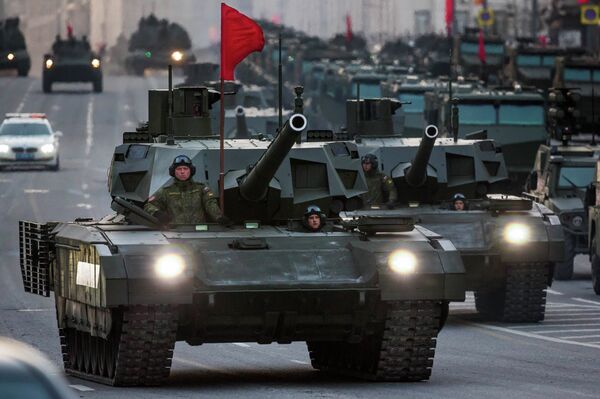
The demonstration of advanced armored vehicles – the Armata and Kurganets platform as well as the Bumerang wheeled platform – stole the show during the parade. An entire series of weapons had been designed using the Armata platform, including the T-14 tank, the T-15 heavy infantry combat vehicle, and the Koalitsiya-SV 152-mm self-propelled artillery gun.
Russia’s Military Operation in Syria
As for September 30, the task unit comprised 12 Su-24M tactical bombers, 12 Su-25SM ground attacks jets, four Su-30SM jet fighters, six Su-34 bombers as well as Mi-24 and Mi-8AMTSh attack helicopters. A Pantsir-S1 anti-aircraft missile system and a Krasukha-4 electronic warfare complex were also deployed to the base.
On the morning of October 7, warships of the Caspian Flotilla fired 26 Kalibr cruise missiles against Daesh (Islamic State) targets. This was the first combat use of cruise missiles in the history of the Russian military. On October 20, a memorandum was signed between the Russian Armed Forces and the Pentagon to avoid collisions in the airspace over Syria.
On October 31, a Russian Airbus A321 passenger aircraft crashed in the Sinai Peninsula. All the 224 people on board were killed. President Vladimir Putin pledged to "find and punish" those behind the catastrophe. On November 17, Russian Tu-22M3, Tu-160 and Tu-95 long-range bombers carried out a massive strike against Daesh production facilities. A total of 34 Kh-101 cruise missiles were engaged.
On November 18, Tu-160, Tu-95MS and Tu-22M3 bombers carried out airstrikes against 206 Daesh targets. The Russian General Staff reinforced the task force in Syria, up to 69 aircraft. In addition, the aerial unit was supported by four ships of the Caspian Flotilla and six ships of the Russian Navy deployed to the Mediterranean. On November 20, the Caspian Flotilla fired 18 cruise missile against Daesh targets.
A total of 1,400 tons of various bombs and 101 cruise missiles were used against terrorists during the operation.
On December 7, the first combat launch of cruise missiles was performed from the Rostov-on-Don submarine of the Russian Navy.
Start of the Su-35 Deliveries to the Chinese Air Force
This year marked a new stage in military and technical cooperation between Russia and China. A bilateral agreement to deliver 24 Su-35 4++-generation multirole fighters was inked. The negotiations have been underway since 2008. The contract is estimated at nearly $2 billion, $83 million for each jet.
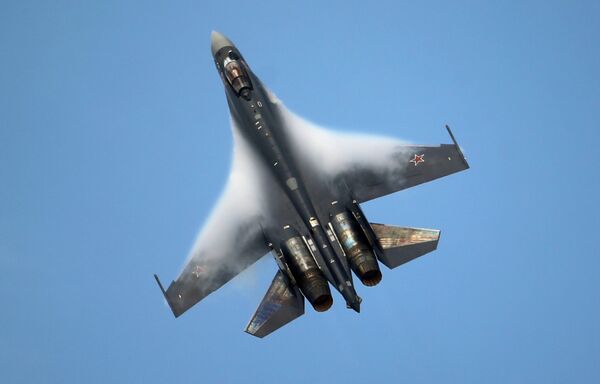
China became the first buyer of these cutting-edge war machines. According to the contract, the jets are equipped with Chinese-made avionics, but will not be manufactured in China.
Russian and China have been building up their military cooperation. Before the Su-35 contract, Russia delivered to China Su-27 fighters, S-400 and S-300 air defenses, Buk anti-aircraft missiles, and Lada-class diesel-powered submarines.
New Branch in the Russian Armed Forces
August 1 was declared the day when the Russian Aerospace Forces were established. On this day in 2015, the Management Center of the Russian Aerospace Forces was put on combat duty.
The center serves as the centerpiece for operative management of the Russian Air Force, Air Defense Forces and the Missile Defense. Their tasks include protecting the Russian airspace, managing missile launches as well as securing the Russian satellite group.
By August 1, the command and headquarters of the Aerospace Forces were established. The new branch comprised the Air Force, the Space Force and the Air Defense Forces.
Col. Gen. Viktor Bondarev was appointed Commander-in-Chief of the Aerospace Forces.
Military analysts underscored that the Aerospace Forces were established at a time when the Pentagon relies on the new conception of an immediate global strike and mulls deploying attack systems to the near space.
Six New Military Bases Built in the Arctic
In January 2014, the preparation for establishing a new military formation based on the Northern Fleet was completed. The Sever (North) strategic command was formed to protect Russia’s interests in the Arctic Region.
It comprised forces of the Northern Fleet as well as units of the Aerospace Forces and the Army.
Currently, six military bases are ready, including on Kotelny Island (the New Siberian Islands), Alexandra Land (Franz Joseph Land), Sredny Island (the Severnaya Zemlya archipelago) as well as in the village of Rogachevo (the Novaya Zemlya archipelago), at the Otto Schmidt Cape and on the Wrangel Island.

